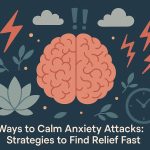The term “dark web” often conjures images of cybercriminals lurking in the digital shadows, dealing in illegal activity far beyond the reach of law enforcement. While this reputation isn’t entirely unfounded, much of the public conversation is driven by fear, misinformation, and pop culture rather than fact. For businesses, understanding the dark web—what it is, what it isn’t, and how it might affect them—is essential in today’s cyber risk landscape. Let’s cut through the noise and unpack some of the most common myths and facts surrounding the dark web, and what every business should know to stay secure.
What Actually is the Dark Web?
The internet can be thought of in three layers:
- Surface Web: The portion of the internet most of us use daily—news websites, social media, e-commerce platforms—which is indexed by search engines.
- Deep Web: Web content not indexed by search engines, such as online banking portals, company intranets, and password-protected databases.
- Dark Web: A subsection of the deep web that requires specific software—such as Tor—to access. It offers anonymity for both users and website operators.
The dark web is not inherently illegal – in fact, it hosts a mix of content, some of which is legitimate (such as whistleblower platforms or forums in countries with restrictive regimes). However, it’s also where stolen data, illicit goods, and criminal services are frequently traded.
Common Myths About the Dark Web
- Myth 1 – The Dark Web is All Criminal: While cybercrime is a significant concern, not every corner of the dark web is sinister. It has been used by journalists, activists, and researchers to communicate securely. The key issue isn’t the platform—it’s how it’s used.
- Myth 2 – Accessing the Dark Web is Illegal: Merely accessing the dark web isn’t against the law in Australia. However, engaging with or purchasing illegal goods and services is—just as it would be on the surface web.
- Myth 3 – Businesses Don’t Need to Worry About the Dark Web: This is one of the most dangerous misconceptions. Many data breaches result in stolen credentials, intellectual property, or sensitive business information being sold or leaked on dark web marketplaces. If your employee credentials are exposed, it could lead to phishing attacks, ransomware, or worse.
Dark Web Risks for Businesses
For modern businesses, especially those storing customer data or handling financial transactions, the dark web poses several threats:
- Credential Leaks: Compromised usernames and passwords can be sold, often without the affected company knowing until after a breach.
- Brand Damage: Sensitive information, if leaked, can severely impact public trust.
- Targeted Attacks: Threat actors on the dark web often collaborate and share vulnerabilities, making businesses with poor cyber hygiene prime targets.
One way to defend against these threats is by implementing a dedicated SOC (Security Operations Centre), which can proactively monitor, detect, and respond to cyber threats—on both the open web and the dark web.
What Can Businesses Do?
- Conduct Regular Cyber Risk Assessments: Understand your digital footprint and identify where vulnerabilities may exist—especially those that could expose you to dark web threats.
- Monitor for Credential Leaks: Dark web monitoring services can alert you when your business’s email addresses or domains appear in suspicious places.
- Use Multi-Factor Authentication (MFA): Even if credentials are leaked, MFA can prevent unauthorised access to company systems.
- Educate Your Staff: Cybersecurity isn’t just an IT issue – regular training helps employees recognise phishing attempts and poor security practices.
- Invest in Cybersecurity Infrastructure: A layered defence strategy—including endpoint protection, firewalls, and a responsive SOC—can dramatically reduce risk.
The dark web isn’t just an underground marketplace—it’s a mirror of our digital vulnerabilities
For businesses, the question isn’t if your data could end up on the dark web, but when—and how prepared you are to detect and respond. By debunking the myths, staying informed, and investing in strong cybersecurity strategies like a dedicated SOC, businesses can shift from being reactive to resilient in the face of ever-evolving digital threats.
Lynn Martelli is an editor at Readability. She received her MFA in Creative Writing from Antioch University and has worked as an editor for over 10 years. Lynn has edited a wide variety of books, including fiction, non-fiction, memoirs, and more. In her free time, Lynn enjoys reading, writing, and spending time with her family and friends.















